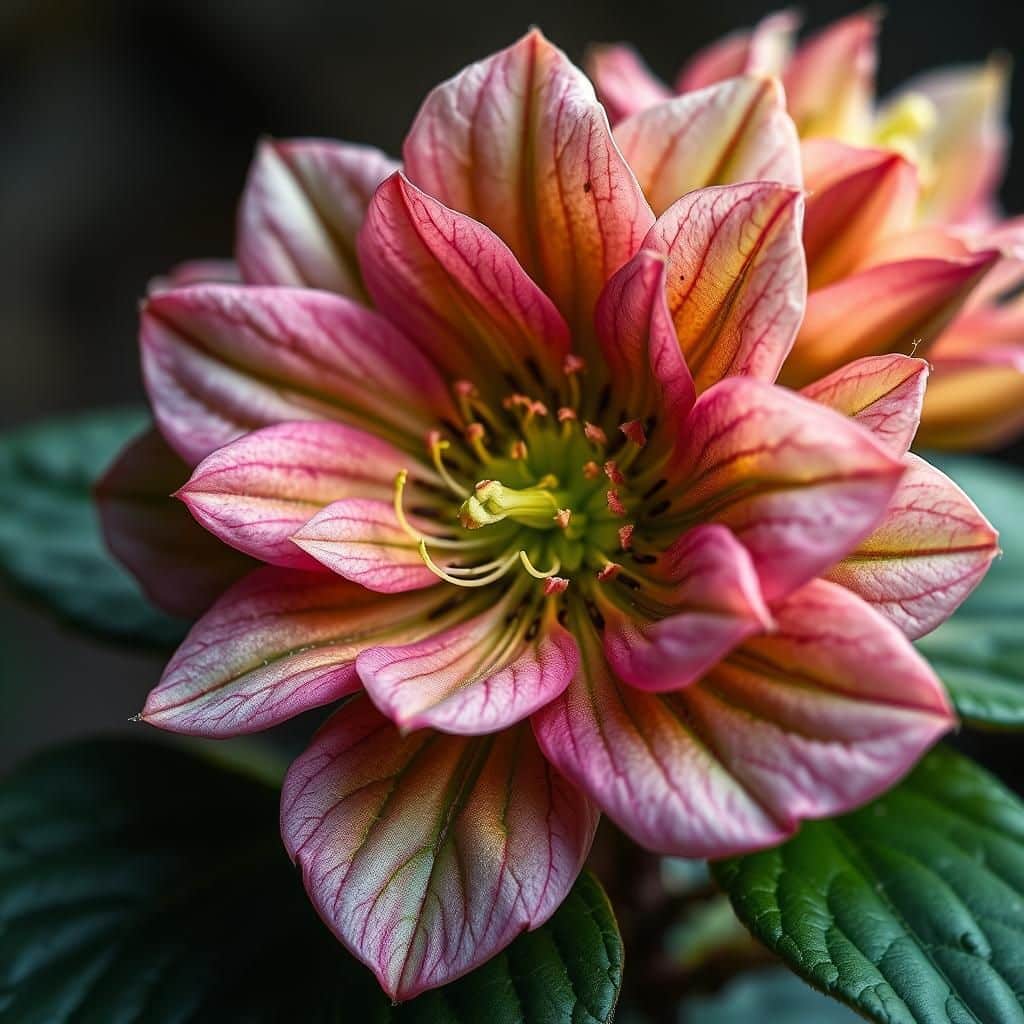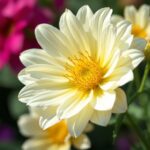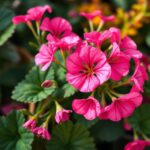Discovering Beauty: What is the Prettiest Blooming Plant?

In the vast world of flora, blooming plants captivate us with their vibrant colors and enchanting fragrances. Among the multitude of species, some stand out as particularly stunning, sparking debates about which truly holds the title of the prettiest. This article embarks on a journey to explore the most visually striking blooming plants, delving into their unique characteristics, cultural significance, and the emotions they evoke. From delicate cherry blossoms to majestic hibiscus, we aim to celebrate the beauty of nature and inspire a deeper appreciation for the flowers that adorn our gardens and landscapes. Join us in discovering the allure of these botanical wonders.
What is the Prettiest Blooming Plant?
The title of the prettiest blooming plant is often subjective and can vary based on personal preferences and regional flora. However, one strong contender is the Cherry Blossom (Prunus serrulata), renowned for its stunning pink and white flowers that blanket trees in a gorgeous display during the spring season. These blossoms have not only been celebrated in Japanese culture, where they symbolize the transient nature of life, but are also cherished globally for their breathtaking beauty. Their ephemeral bloom lasts only a week or two, prompting many to appreciate their allure even more. The soft fragrance and visual splendor of cherry blossoms evoke feelings of peace and joy, making them a perennial favorite among garden enthusiasts and casual observers alike.
Cherry Blossom Characteristics
The Cherry Blossom exhibits distinctive features, including clusters of delicate pink or white blooms that emerge before the leaves, creating a stunning spectacle. Typically, these flowers appear in late March to early April, depending on the climate and region. The trees themselves can vary in size, reaching heights of 15 to 30 feet, and their graceful branches are often adorned with thousands of flowers during peak bloom, creating an unforgettable landscape of color. Furthermore, these plants thrive in well-drained soil and prefer full sunlight to flourish, contributing to their popularity in parks and botanical gardens.
Cultural Significance of Cherry Blossoms
In many cultures, particularly in Japan, cherry blossoms hold profound cultural significance. They are celebrated through the annual festival known as Hanami, where individuals gather to view and appreciate the beauty of the blossoms. This tradition symbolizes the fleeting nature of life, as the blossoms bloom for a short period before falling to the ground. Art, poetry, and literature often feature cherry blossoms as representations of beauty, renewal, and the importance of cherishing moments. As a result, they have become not only a natural spectacle but also an integral aspect of cultural identity and heritage.
Other Beautiful Blooming Plants
While cherry blossoms often steal the show, numerous other plants are equally admired for their beauty. Notable examples include the Rose with its vibrant colors and sweet fragrance, the Tulip known for its elegant shape and variety of hues, and the Orchid, famed for its exotic appearance and intricate designs. Each plant brings a unique charm to gardens and landscapes, appealing to different tastes and preferences. These flowers collectively enhance the beauty of outdoor spaces and signify various emotions and celebrations in different cultures.
See also:
Ideal Growing Conditions for Cherry Blossoms
To grow Cherry Blossoms successfully, certain conditions must be met. These trees thrive in full sun, requiring at least six hours of direct sunlight daily. They prefer well-drained, loamy soil, and while they can tolerate some soil conditions, ensuring good drainage is crucial to prevent root rot. Regular watering (especially in dry spells) will promote healthy growth, but caution should be taken not to overwater. Pruning the tree after blooming helps improve air circulation and encourages a more robust flowering the following season.
The Lifecycle of Cherry Blossoms
The lifecycle of cherry blossoms begins with the emergence of buds in early spring, which then develop into stunning flowers. These buds typically open in late March or early April, depending on the temperature and specific variety. After a few weeks of blooming, the flowers begin to fall, creating a picturesque scene as they scatter on the ground. Following blooming, the tree produces green leaves, which serve to photosynthesize and prepare the tree for the winter months. By late summer, the tree focuses on producing fruit, which is generally not edible but continues the lifecycle of the plant as seeds are dispersed.
| Plant Type | Blooming Season | Color Variations | Cultural Significance |
|---|---|---|---|
| Cherry Blossom | Spring | Pink, White | Symbol of renewal |
| Rose | Summer | Red, Pink, Yellow | Love and passion |
| Tulip | Spring | Various | New beginnings |
| Orchid | Varies | Multiple colors | Beauty and strength |
Exploring the Most Captivating Flower Varieties
When it comes to discovering beauty in nature, identifying the prettiest blooming plants can be a delightful yet challenging endeavor. Several factors contribute to a plant’s aesthetic appeal, including color, shape, and fragrance. Each blooming variety offers a unique expression of beauty, from the delicate petals of a cherry blossom to the vibrant hues of a tropical hibiscus. This exploration not only highlights the diversity of the plant kingdom but also encourages enthusiasts to appreciate how these natural wonders enhance our surroundings and gardening experiences.
The Allure of Cherry Blossoms
Cherry blossoms are often celebrated for their ephemeral beauty and are a significant symbol in many cultures, particularly in Japan. They bloom in vibrant shades of pink and white, attracting thousands of visitors to parks during the sakura season. The brief but spectacular display serves as a reminder of the transient nature of beauty, encapsulating the essence of renewal and hope.
The Vibrance of Hibiscus
Hibiscus flowers stand out with their large, showy blooms and come in a myriad of colors, including red, yellow, and pink. Native to tropical climates, these flowers are not only visually stunning but also attract various pollinators, such as bees and butterflies. The bold appearance and lush foliage make hibiscus a popular choice for creating a vibrant garden landscape, adding a touch of the exotic to any setting.
See also:
The Elegance of Orchids
Renowned for their intricate patterns and diverse species, orchids represent one of the largest families of blooming plants. These flowers are often associated with exoticism and luxury, appealing to many for their unique shapes and colors. Orchids thrive in various conditions, making them versatile for indoor and outdoor gardens. Their long-lasting blooms reward growers with enduring beauty that captivates both avid gardeners and casual flower enthusiasts alike.
The Charm of Lavender
Lavender is cherished not only for its lovely purple hue but also for its soothing fragrance. Known for its calming properties, this plant is frequently used in aromatherapy and culinary applications. Lavender blooms in striking clusters that attract bees, promoting pollinator health. Its fragrant presence and adaptability make it a favorite among gardeners looking to create a sensory experience in their outdoor spaces.
The Uniqueness of Lotus Flowers
Lotus flowers are renowned for their enchanting beauty and profound symbolism in various cultures, particularly in Asia. These stunning blossoms emerge from murky waters, showcasing their remarkable ability to thrive in less than ideal conditions. With their vibrant pink and white petals, lotuses symbolize purity and enlightenment, making them a source of inspiration in art and spirituality. Their unique growth process adds a layer of intrigue to their beauty, captivating those who seek to understand the depths of nature’s marvels.
Questions from Our Readers
What is the prettiest blooming plant?
The prettiest blooming plant can vary based on personal preferences, but many people admire the cherry blossom for its stunning pink flowers. These blossoms are not only beautiful but also hold cultural significance, particularly in Japan, where they are celebrated each spring.
Are there any flowering plants that bloom all year round?
Yes, there are several flowering plants that can bloom year-round, such as the Bougainvillea and Geraniums. These plants are known for their vibrant colors and the ability to flourish in various climates, making them popular choices for gardens.
See also:
How can I choose the right blooming plant for my garden?
To choose the right blooming plant for your garden, consider factors like climate, soil type, and the amount of sunlight the area receives. Researching plants that thrive in your region and match your aesthetic preferences will help create a visually appealing garden.
What care do blooming plants typically need?
Blooming plants generally require adequate sunlight, watering, and fertilization to thrive. It's important to understand the specific needs of each plant, such as soil requirements and pruning, to ensure they remain healthy and continue to produce beautiful blooms.

If you want to read more articles like Discovering Beauty: What is the Prettiest Blooming Plant?, we recommend you check out our Flowers category.
Leave a Reply
Related Articles